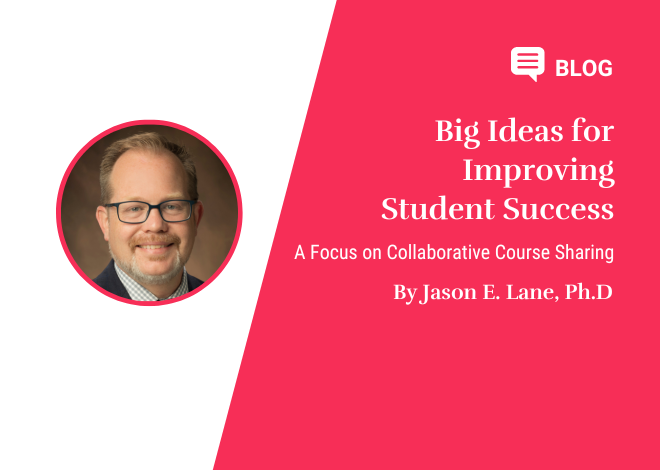Key Learnings from the 2022 CHLOE (Changing Landscape of Online Education) Report:
- Regardless of age or level, when it comes to student interest in online learning, COOs are forecasting growth.
- Across the board, the educational experience is predicted to shift toward hybrid and online learning.
- Institutions are still struggling with staffing needs for developing and maintaining online courses and programs. Academic leaders will need to look to innovative models to meet demand.
______
In the latest Changing Landscape of Online Education (CHLOE) survey report, online learning leaders predict a future educational landscape of mixed and hybrid modalities that combine on-campus and online experiences. This year’s report, CHLOE 7: Tracking Online Learning from Mainstream Acceptance to Universal Adoption, surveyed Chief Online Officers (COOs) from hundreds of higher education institutions across the country, and nearly all COOs anticipate increased student interest in online learning.
Additionally, they projected that future students, regardless of age or level, will have an educational experience of mixed modalities, with few to no students studying exclusively on campus. In short, student demand for flexible learning options is predicted to rise, and many institutions’ pre-pandemic offerings are not poised to meet these demands.

Pandemic Investments Spurred Interest in Online
The pandemic served as a springboard for institutional investments in online learning faculty development and technologies, as well as student experience in remote learning that in many cases blossomed into demand for more online options. When asked if the pandemic boosted student interest in online, approximately three-quarters of online leaders believe students at their institutions, as of Fall 2021, to be more interested in online learning compared to 2019. Slight differences were seen by student demographic groups, though, with graduate students predicted to have much higher interest in online learning post-pandemic than either traditional-aged or adult undergraduates.
Regardless of age or level, COOs are forecasting growth in student interest in online learning.
Leaders Predict More Focus on a “Balanced Modality” Experience
Across the board, the educational experience is predicted to shift toward hybrid and online learning. By 2025, online learning leaders predict an educational experience of balanced and mixed modalities, veering away from the historically common binary of on-campus or online. Slightly less than half (44%) of COOs are forecasting a “majority campus, some online” learning environment for traditional-aged undergraduate students, while 40% predict a balanced on-campus/online experience; only 4% of COOs think that traditional undergraduates will have a fully on-campus experience with little or no online learning.
The prediction shifts toward greater online dominance for other student groups, however, with 36% of COOs predicting a balanced modality experience for adult undergraduates and 32% predicting a majority online experience, with some on-campus courses.
Challenges in Meeting the Current and Future Online Demand
How will U.S. higher education institutions meet the predicted demand for quality online learning? CHLOE 7 revealed that institutions are still struggling with staffing needs for developing and maintaining online courses and programs, such as instructional designers (IDs) and educational technologists. Although the total number of IDs at responding institutions grew by 20% from 2019 to 2021, only 10% of online leaders reported that ID capacity as of Fall 2021 was “fully sufficient” for present needs, and only 3% of chief of online officers felt it would meet anticipated need. Historically, COOs have cited budget constraints as the top reason for inadequate online staffing.

Designing high-quality online courses requires faculty and staff time and expertise, and often necessitates the creation of design, development, and evaluation processes. Staffing and budget restrictions are likely also at play with another standout finding from CHLOE 7 – although 96% of responding institutions have adopted quality assurance (QA) standards for online courses, many institutions are not formally evaluating if those standards have been met. Half of responding COOs reported that all asynchronous online courses must meet QA standards, with 45% reporting that evaluation was instead optional by either faculty choice or the department/program. Additionally, less than 10% of COOs reported that online asynchronous quality was evaluated by an external third party, while 74% reported internally assuring quality in online asynchronous courses.
Innovative Models to Address Student Needs
When interest in online learning outpaces the ability of institutions to deliver high-quality online options, institutions will need to look toward innovative models, such as course-sharing, to meet demand. One of the greatest affordances of asynchronous online learning is the flexibility of the “anytime, anyplace” classroom, which helps students stay on track to graduation even with hectic schedules, working full-time, or being temporarily located away from the institutional campus. However, providing students with new online options may be limited by budget constraints, as well as faculty time/institutional expertise.
With online learning leaders predicting continued interest and growth, course-sharing partnerships are one obvious avenue to ensuring that students have access to quality online courses that keep them on track and enhance curricula, all while using institutional resources effectively. Inter-institutional collaboration will continue to enable institutions, regardless of size or capacity, to innovate toward a more flexible future.



